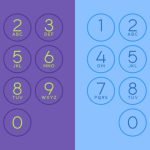The Math section of the ACT can be a challenging part of the test, but with the right strategies and preparation, you can excel and boost your overall score. Whether you’re a math whiz or find the subject a bit intimidating, there are proven tips and techniques that can help you perform at your best on test day. In this guide, we’ll explore some key strategies to ace the Math ACT Tips, covering everything from time management to specific math skills. Let’s dive in!
1. Understand the Format of the ACT Math Section
Before you can begin to strategize for the ACT Math section, it’s important to understand the structure of this portion of the test:
- Number of Questions: 60 multiple-choice questions.
- Time: 60 minutes (about 1 minute per question).
- Content Areas: The questions cover six primary areas: Pre-Algebra, Elementary Algebra, Intermediate Algebra, Coordinate Geometry, Plane Geometry, and Trigonometry.
Each question will have five answer choices, and there is no penalty for guessing, so it’s critical to answer every question, even if you’re unsure. click here
2. Master the ACT Math Content
The ACT Math section tests a wide range of math topics, so focusing on the specific areas covered in the test can significantly improve your score. Here’s a breakdown of the topics and some tips for each:
- Pre-Algebra (20-25%): This includes basic operations, fractions, ratios, percentages, and basic number properties. Make sure you’re comfortable with calculations and manipulating numbers quickly.
- Elementary Algebra (15-20%): Focus on solving equations, understanding inequalities, and working with exponents. Practice simplifying expressions and solving for unknowns efficiently.
- Intermediate Algebra (15-20%): These questions involve quadratic equations, systems of equations, and functions. Understanding how to factor, solve quadratic formulas, and manipulate functions will help here.
- Coordinate Geometry (15-20%): Know how to plot points, understand the slope of a line, and interpret linear equations. Be sure you can work with the distance formula and midpoint formula.
- Plane Geometry (20-25%): Focus on properties of shapes like triangles, circles, and polygons. Know your geometry formulas, including area, perimeter, and volume calculations, as well as the Pythagorean Theorem.
- Trigonometry (5-10%): Though it’s a smaller portion of the test, knowing basic trigonometric functions (sine, cosine, and tangent) and their applications is essential. Learn to work with right triangles and understand the unit circle.
3. Work on Time Management
With 60 questions and only 60 minutes to answer them, pacing is crucial on the ACT Math section. You should aim to spend around one minute per question. Here are a few time management strategies to help:
- Skip and Return: Don’t get stuck on difficult questions. If you encounter a question that stumps you, mark it and move on. Come back to it later if you have time. This ensures you don’t waste valuable time on a single problem.
- Prioritize Easier Questions: Go through the test and answer the questions you find easiest first. This will give you confidence and maximize the number of points you earn early on. Save the harder questions for later.
- Use Guessing Strategically: Since there’s no penalty for guessing, never leave a question blank. If you’re running out of time, make educated guesses. Eliminate obviously wrong answers to increase your chances of guessing correctly. visit us
4. Memorize Key Formulas
While some formulas are provided on the test, it’s important to have the most common ones memorized so you can save time. Key formulas you should know include:
- Area and perimeter of triangles, rectangles, and circles.
- Volume of cylinders, spheres, and rectangular solids.
- Slope formula and equation of a line.
- Distance formula and midpoint formula.
- Pythagorean Theorem.
- Sine, cosine, and tangent ratios for right triangles.
Practicing problems that require these formulas will reinforce your understanding and make them second nature when it’s time for the test.
5. Use Process of Elimination
On multiple-choice questions, eliminating wrong answers can significantly improve your odds of getting the correct answer, even if you’re unsure about the solution. Here’s how to apply this strategy:
- Plug in Choices: For questions involving equations, you can often plug the answer choices back into the problem to see which one works. This is particularly useful for algebraic equations.
- Estimation: For geometry questions, try to estimate the answer by visualizing the shape or drawing a diagram. This can help you rule out unreasonable answers.
- Look for Patterns: In some problems, answer choices will follow a pattern. Identifying that pattern can help you eliminate options that don’t fit the logical progression.
6. Practice with Real ACT Tests
The best way to prepare for the Math ACT is by taking full-length, timed practice tests. Working through real ACT questions allows you to become familiar with the format and types of questions you’ll encounter. It also helps you gauge your pacing, so you can adjust your strategy as needed.
When reviewing practice tests, take note of:
- Common Mistakes: Are you making errors in a particular area (e.g., algebra or geometry)? Focus your study on your weak points.
- Time Spent: Track how long it takes you to answer questions. Are you spending too much time on certain types of problems? This will help you improve your time management.
- Missed Questions: After completing practice tests, carefully review every question you got wrong. Understanding your mistakes is one of the most effective ways to improve.
7. Utilize a Calculator Wisely
The ACT Math section allows the use of a calculator, but knowing how and when to use it can save you time and help you avoid errors. Here are some tips for using your calculator effectively:
- Basic Calculations: Use your calculator for simple arithmetic to save time and avoid careless mistakes.
- Complex Functions: For more complex functions such as trigonometry or logarithms, make sure you know how to input them correctly into your calculator. Practice using your calculator on practice tests so that you’re comfortable with its functions.
- Don’t Over-rely: While a calculator is a useful tool, don’t rely on it for everything. Some problems can be solved faster by hand, especially simpler algebraic and geometric questions.
8. Stay Calm and Confident
Finally, mindset plays a crucial role in test performance. On test day, stay calm and confident. Remember that the ACT doesn’t require perfection. Your goal is to get as many questions right as possible within the time limit.
- Breathe and Focus: If you start feeling overwhelmed, take a deep breath and refocus. You’ve prepared for this, and staying calm will help you think clearly.
- Don’t Panic Over Tough Questions: It’s okay to skip tough questions and come back to them. Keep moving forward, and trust your preparation.
Acing the Math ACT is all about preparation, practice, and strategy. By understanding the format, mastering the content, managing your time effectively, and using proven test-taking techniques, you can dramatically improve your score. Don’t forget to practice regularly, stay positive, and approach the test with confidence. With these tips in mind, you’ll be well on your way to achieving success on the Math ACT!




















